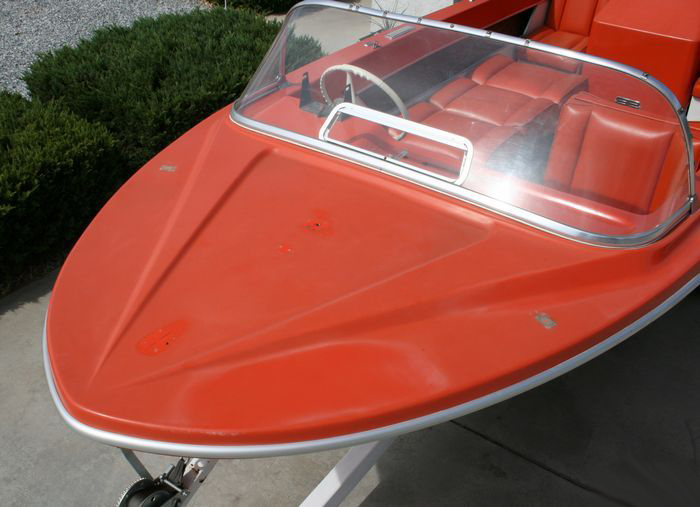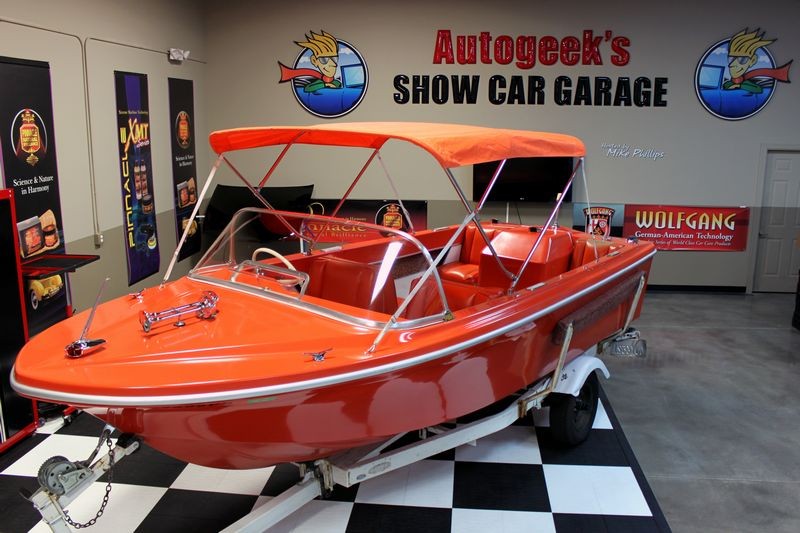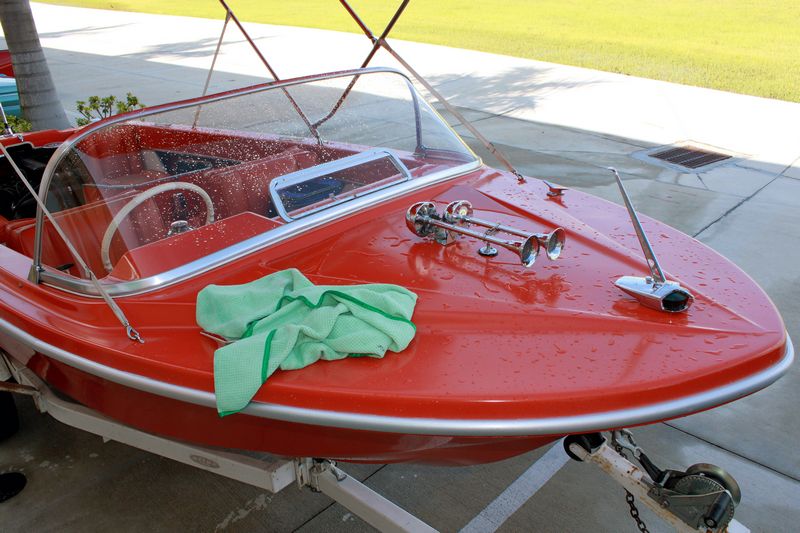Re: Glass Top Scratches
Plexiglas seems to have gone the way of the Dodo Bird. Sad because it's so EASY to work on...
Plexiglas is what was used in the OLD days. The back window on a classic 1950's Corvette was Plexiglas and ANYONE could buff scratches out of this type of window and impress you.
Here's the window of the 1967 Starline Deville I use to own...
When I bought the boat the Plexiglas window was actually in GREAT shape for a boat that was 42 years old at the time the above picture was taken.
Here's how it looked after I buffed the boat out...
Here's a shot looking through the window out on the water...
Walgreen's Estate
Of course, always take care of antique Plexiglas when you get off the water...
Plexiglas is easy to work on. I LOVE working on Plexiglas.
I pass on Lexan, especially if the "item" is expensive because the expectations of the owner of the time are unrealistic as they tend to either confuse Lexan with all plastics are they just don't know anything about plastics.
PlastX uses a unique and rare abrasive mined in only one place on earth, (that I've been told), and you might give this a try although I couldn't get it to fix a Lexan Ferrari back window.
I also had "some" luck using M105, at the time M105 and the SMAT abrasive technology was JUST INTRODUCED, so it's possible some of the other new abrasive compounds and polishes on the market might work.
I'm talking about the abrasive technology introduced in these brands in the last few years...
Optimum
Sonax
Wolfgang Uber Compound
Menzerna FG400
Meguiar's
Rupes
I'm probably missing a few but the point is a LOT of very good abrasive technology has been introduced in the last few years and it could be some of these product could work but only testing will tell.
Detailing anything is easier than ever today simply because of abrasive technology.
It's the abrasive technology that is the most important aspect of undoing damage and creating a flawless finish on both CLEARcoat paints or clear plastics.
Some guys say technique is number #1 and I say their wrong. Technique is important but abrasive technology is number #1.
That's why I also type this all the time now days to mostly newbies joining the forum and wanting to learn how to detail cars...
Don't skimp on abrasive technology
That means don't skimp when it comes to choosing and buying your compounds and polishes. It is the abrasive technology or to drill down... the little tiny things that are going to abrade the surface that are pressed against the surface by the face of the pad that are all important.
And even more so when you consider how thin paint is...
Hope that helps...








